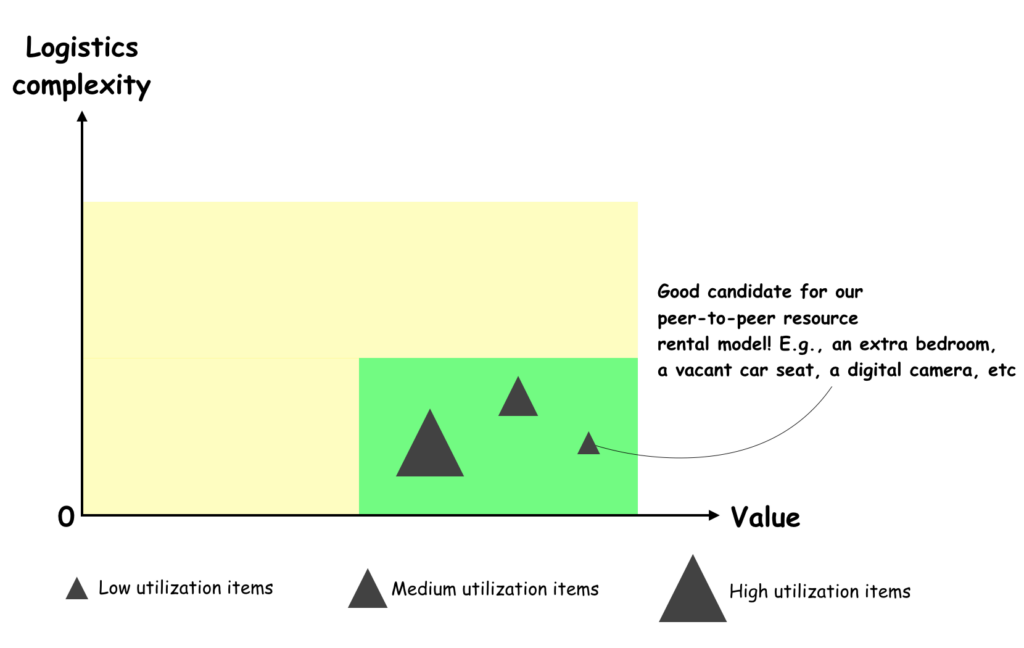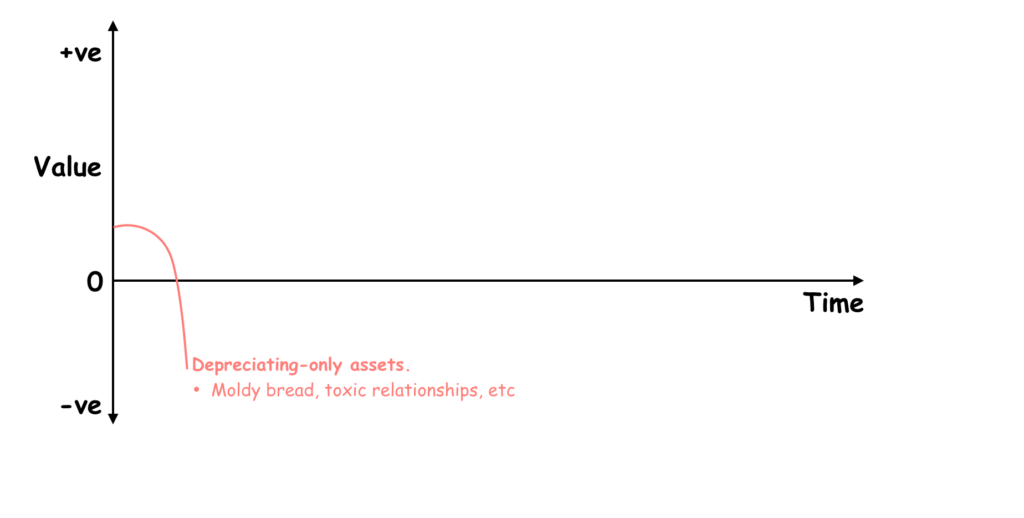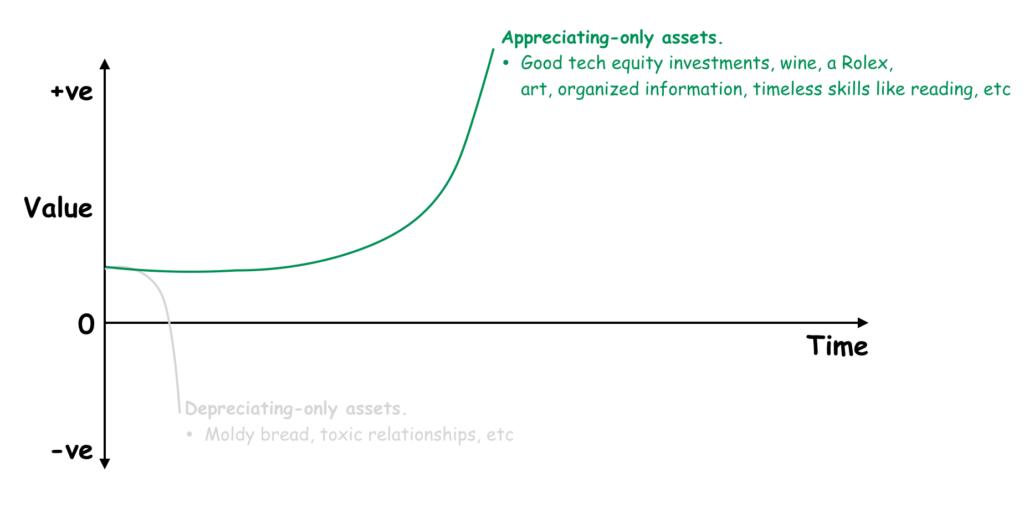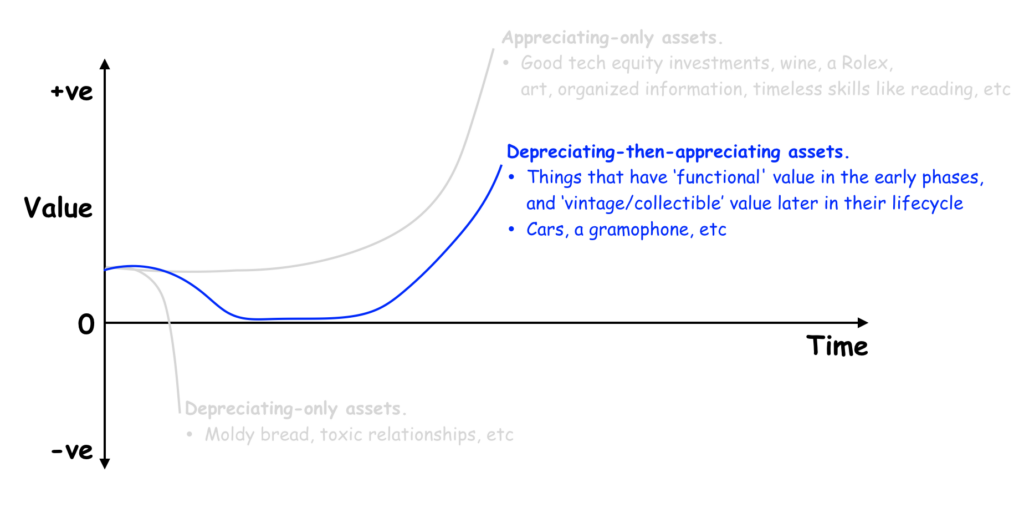I’ve been reading about a particular category of ideas: specific ideas that are successful in specific fields, and then using those themes to extrapolate to general applications in other areas.
Time-sharing of resources is one such theme. The idea is very simple, but its ubiquity can be tricky to appreciate. In essence,
- Venture = time-sharing of resource X
where resource X is any underutilized asset owned by an individual or entity. If you have excess units of resource X available, you can “lend” them to people looking for them.
By “renting” out your “extra” or “unused” resource to someone who’s looking for it, you fill a gap in the market, and consequently generate revenue because of it. Basic supply and demand; economics 101. Some well-known ideas to provide you with a mental framework to appreciate this better:
- Airbnb = time-sharing of extra residential space
- Uber = time-sharing of extra vehicle ride space
- WeWork = time-sharing of extra work space
- FatLlama = time-sharing of individually-owned everyday items (such as cameras, etc)
- Tesla Robotaxi = time-sharing of driverless vehicle space
- Amazon Web Services = time-sharing of web services (sort of?)
Public infrastructure maintained by government institutions is a valid corollary of this same model. Instead of being privately owned and paid for by individuals, this infrastructure is funded with taxpayer money. As a gross oversimplification,
- Public roads = time-sharing of vehicle driving space, funded with taxpayer money
- Public parking spots = time-sharing of vehicle holding space, funded with taxpayer money
- Public libraries = time-sharing of information, funded with taxpayer money
There exist private equivalents of these public entities as well, and vice-versa.
Stretching this idea further, I wonder how many space / money / information / resource sharing opportunities there exist, waiting to be fleshed out. The ‘utilization’ of most things we own is horribly low – after all, how many hours in a week (168 hours) do you use your camera, television, or other high value items?
Of course there’s a ‘usefulness quotient’ in all of this as well – it may not make financial sense to rent out low-value and high-logistics-overhead items such as a dining table or a washing machine – diminishing returns.
I think a good rule of thumb is the 80/20 rule. From all the high value items you own, it’s very likely that you spend most of your time with very few items – such as your phone or your computer. High-value items that don’t follow this 80/20 rule are likely good candidates for our peer-to-peer resource rental thought experiment.

It’s clear then that to increase your chances of successful resource ‘rentals’ of any kind, you want to maximize the high-value assets you own. You want to acquire lost-cost, appreciating assets, and hold them over time so they increase in value.
I thought about what kinds of things – tangible and intangible – I would deal with on a day-to-day basis. With a bird’s eye view, it seems to me that the following broad strokes capture a majority of the spectrum:
- Depreciating-only assets
- Appreciating-only assets
- Depreciating-then-appreciating assets
Depreciating-only assets: this one is straight forward – some things just become a burden over time, which gets heavier the longer you hold on to them. After a period of time, there is net negative value contribution by these forces, not just net zero contribution. Avoid these like the plague.
Side note: these charts are not to scale, but instead are intended to explain my thought process. The starting points of the plots (the y-intercepts) don’t hold meaning in these charts.

Appreciating-only assets: intuitive candidates such as good tech equity investments, and some other collectibles fall under this category as examples. In essence, things – tangible or intangible – that are expected to increase in value over time. Their value growth may slow down or plateau after some time, but these functions are usually still monotonic – they don’t change directions at any time to decrease in value.

Depreciating-then-appreciating assets: this third one is a bit counterintuitive. A lot of day-to-day things would fall under this category. For example, when a new smartphone model comes to market, with low supply and high demand, its price point may be pretty high. Once commoditized enough though, its price point may decrease.

However, over a reasonably long period of time, there would be cases where there would be increase in value not by virtue of ‘function’ or ‘newness’, but by virtue of ‘vintage’ or ‘collectible’ value of the item. How much do you think the now-obsolete first-generation Apple computers would sell for in 2021?
There can be some level of artificial scarcity in this third category that would lead to increased exclusivity over time, making them more valuable.
If you’re in this third, long-term game, you’d want to take ownership of items after they have already taken the commoditization price point hit. In other words, it may be more sensible to buy a used car versus a new car.
I try to actively incorporate these ideas into my wealth and fulfillment generation pursuits in life for both – tangibles and intangibles. I’m sure there’s more to it than my oversimplifications, and I’d love to hear from you about them. Drop me a note!